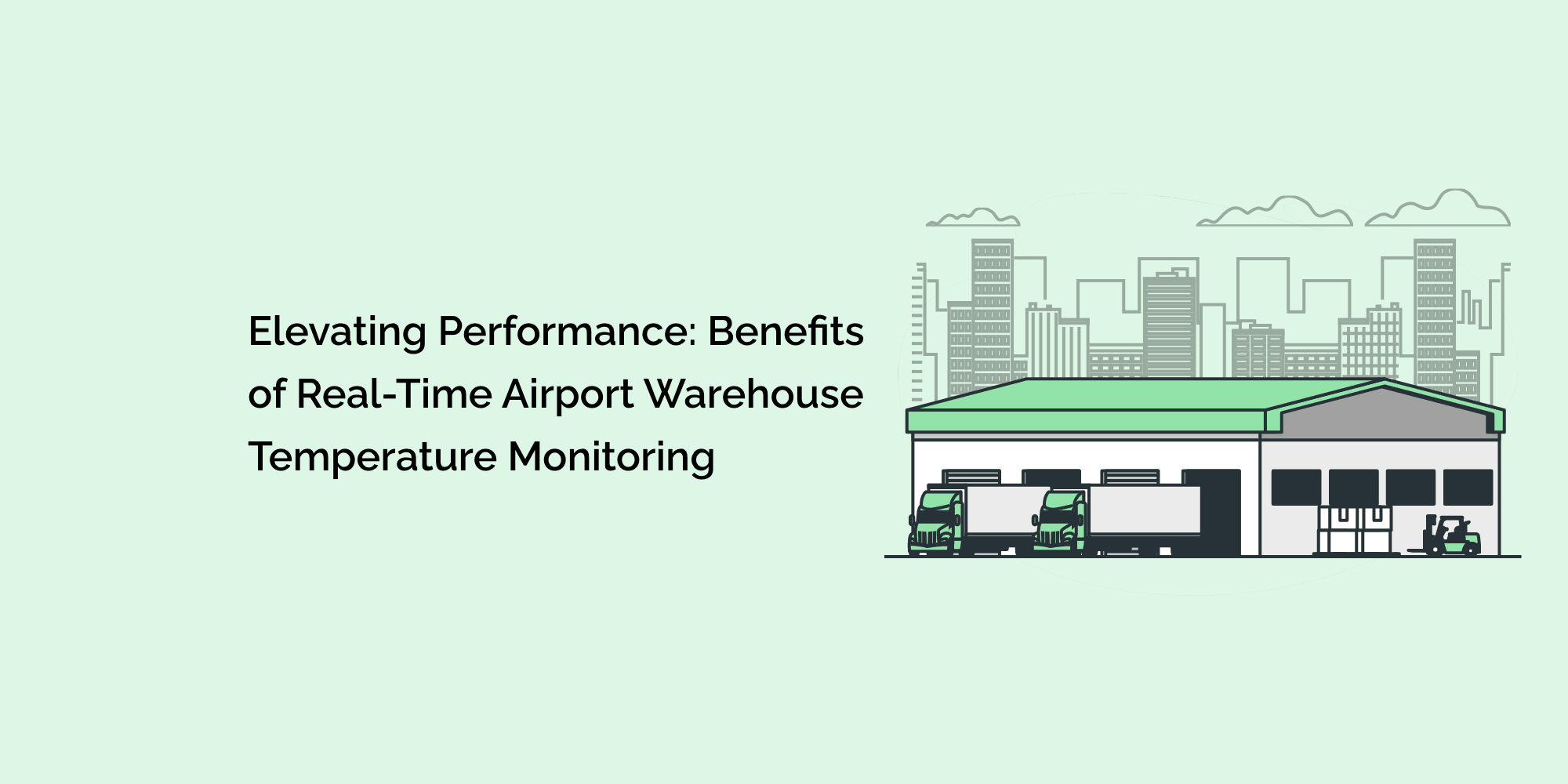Airport warehouses play a critical role in the storage and distribution of various goods, including perishable items. Maintaining precise temperature control within these warehouses is essential to ensure the quality, safety, and longevity of stored goods.
In the past, temperature monitoring in airport warehouses relied on manual checks, which were time-consuming and prone to errors. However, with the advent of real-time temperature monitoring systems, airport warehouses can elevate their performance and achieve optimal temperature control.
In this blog, we will explore the benefits of real-time airport warehouse temperature monitoring and how it can enhance overall operational performance.
-
Early Detection of Temperature Deviations
Real-time airport warehouse temperature monitoring provides instant visibility into temperature conditions. By utilizing temperature sensors and monitoring devices, warehouse managers can detect temperature deviations as soon as they occur. This early detection allows for prompt intervention and corrective actions to be taken.
Temperature deviations can be caused by various factors, such as equipment malfunction, weather conditions, or human error. Real-time monitoring systems send immediate alerts when temperature thresholds are exceeded, enabling warehouse personnel to address the issue before it escalates. Early detection minimizes the risk of product spoilage, reduces waste, and ensures the safety and quality of stored goods.
-
Proactive Temperature Control
Real-time temperature monitoring empowers warehouse managers to adopt a proactive approach to temperature control. Instead of relying on reactive measures, such as manual checks or periodic monitoring, real-time systems provide continuous data collection and analysis.
With real-time temperature data at their fingertips, warehouse managers can identify temperature trends, patterns, and potential risks. They can proactively adjust temperature settings, optimize cooling systems, or implement corrective measures to maintain the desired temperature range. Proactive temperature control minimizes the chances of temperature fluctuations and ensures consistent conditions for perishable goods, improving overall product quality and extending shelf life.
-
Enhanced Operational Efficiency
Real-time temperature monitoring contributes to improved operational efficiency in airport warehouses. By providing immediate visibility into temperature conditions, warehouse managers can make informed decisions and streamline warehouse operations.
Real-time monitoring systems can integrate with inventory management systems, allowing for better coordination between temperature control and inventory movements. Warehouse personnel can optimize storage allocation based on temperature requirements, ensuring that perishable goods are stored in the appropriate zones. This optimization minimizes the need for manual sorting and reduces the risk of temperature-related errors during order fulfillment.
Additionally, real-time temperature monitoring facilitates predictive analytics and machine learning algorithms. By analyzing temperature data over time, these technologies can identify patterns and anomalies, enabling predictive maintenance and optimized energy usage. This enhances overall operational efficiency, reduces maintenance costs, and improves energy sustainability in airport warehouses.
-
Compliance with Regulatory Requirements
Temperature monitoring is crucial for compliance with regulatory requirements, especially in industries such as pharmaceuticals and food storage. Real-time monitoring systems provide accurate and auditable temperature records, ensuring compliance with industry standards and regulatory guidelines.
Temperature data collected in real-time can be stored securely and accessed as needed for compliance audits or regulatory reporting. Real-time monitoring systems also enable proactive measures to address potential compliance issues promptly. By maintaining strict temperature control and having a verifiable record of temperature conditions, airport warehouses can confidently meet regulatory requirements and ensure the integrity of perishable goods.
-
Data-driven Decision-making
Real-time temperature monitoring generates a wealth of data that can be leveraged for data-driven decision-making. By integrating real-time temperature data with advanced analytics platforms, warehouse managers can gain valuable insights and make informed decisions.
Data analytics tools can analyze temperature data, identify trends, and detect correlations between temperature conditions and other factors. This information can be used to optimize warehouse operations, improve inventory management, and enhance supply chain visibility. Real-time temperature monitoring empowers decision-makers with actionable insights, enabling them to continuously improve warehouse performance and adapt to changing market demands.
-
Customer Satisfaction and Brand Reputation
Maintaining precise temperature control in airport warehouses is vital for preserving the quality of perishable goods. Real-time temperature monitoring ensures that products are stored and handled under the optimal temperature conditions, enhancing product quality and extending shelf life.
Consistently delivering high-quality products to customers builds trust and enhances brand reputation. Real-time temperature monitoring provides the assurance that perishable goods are handled with care and comply with quality standards. This, in turn, leads to customer satisfaction, increased customer loyalty, and positive brand recognition.
Conclusion
Real-time airport warehouse temperature monitoring offers numerous benefits that elevate overall performance and ensure the quality and safety of perishable goods. From early detection of temperature deviations to proactive temperature control, enhanced operational efficiency, regulatory compliance, data-driven decision-making, and customer satisfaction, real-time monitoring systems revolutionize temperature control in airport warehouses.
By embracing real-time temperature monitoring, warehouse managers can optimize storage conditions, reduce waste, and improve product quality. The availability of instant temperature data empowers decision-makers to take proactive measures, streamline operations, and meet regulatory requirements. Ultimately, real-time temperature monitoring is a key enabler for airport warehouses seeking to excel in delivering high-quality perishable goods while maintaining a competitive edge in the dynamic global supply chain.








